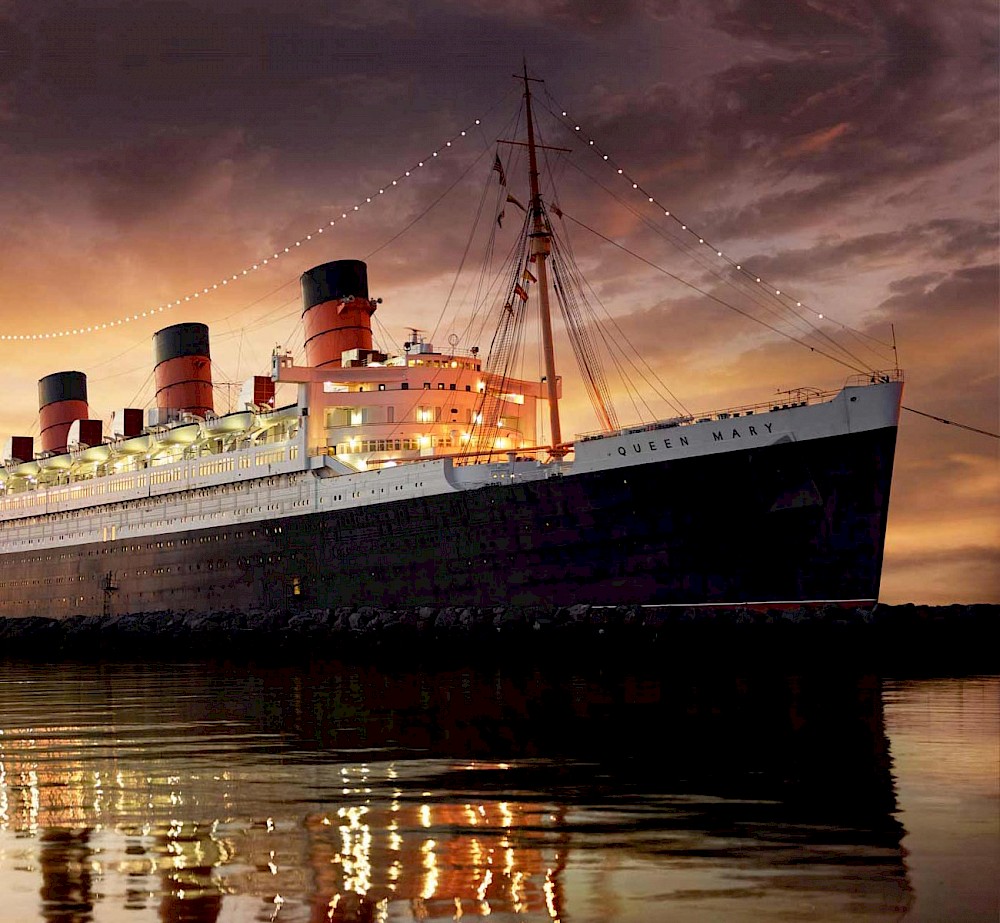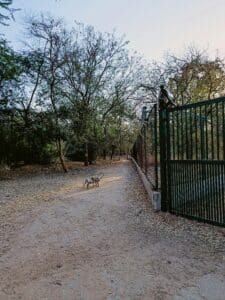Iron fencing has long been admired for its durability, intricate designs, and ability to enhance the aesthetic appeal of properties. In California, iron fencing is not just practical for marking boundaries but also a significant part of the state’s rich historical and cultural heritage. From grand estates to historic missions, iconic iron fences tell stories of the past, showcasing craftsmanship and artistic influences from various periods. These structures serve as both functional barriers and works of art, reflecting the architectural styles and societal values of their time.
In this post, we will explore several historical landmarks in California known for their iconic iron fencing. By delving into the history, design, and significance of these fences, we will uncover the unique stories they tell and the important roles they play in preserving the state’s heritage.
Read more: Exploring Northern California’s Architectural Marvels: A Guide To The Best Bridges
The Huntington Library, Art Museum, and Botanical Gardens
History
Founding and Historical Background
The Huntington Library, Art Museum, and Botanical Gardens, located in San Marino, California, was founded in 1919 by Henry E. Huntington, a prominent businessman and philanthropist. Originally a working ranch, Henry Huntington transformed it into a cultural and educational institution. The property includes a vast library, extensive art collections, and beautifully landscaped gardens, attracting scholars, artists, and tourists from around the world.
Role of Iron Fencing in the Initial Establishment
From its inception, iron fencing played a crucial role in defining and protecting the boundaries of the Huntington estate. These fences were not only practical barriers but also served to enhance the grandeur and elegance of the property. They reflected Huntington’s vision of creating a sophisticated and secure environment for his collections and gardens.
Design
Description of the Iron Fences: Styles and Craftsmanship
The iron fences at the Huntington estate are remarkable for their intricate designs and exceptional craftsmanship. Many of the fences feature elaborate scrollwork, floral motifs, and geometric patterns that highlight the skill of the artisans who created them. The use of wrought iron allows for delicate yet sturdy designs, which add to the overall beauty of the estate.
Influence of European Design on the Fences
European influences are evident in the design of the Huntington’s iron fences. Inspired by French and English garden styles, the fences incorporate elements of classical design, including ornate finials and decorative panels. These European styles blend seamlessly with the surrounding gardens and architecture, creating a cohesive and aesthetically pleasing environment.
Significance
Contribution to Aesthetic and Historical Value
The iron fences at the Huntington estate significantly enhance its aesthetic appeal and historical value. They frame the gardens and buildings, providing a picturesque setting that improves the visitor experience. The detailed craftsmanship and artistic design of the fences offer a glimpse into the past, reflecting the historical period in which they were created.
Role in Preserving Historical Integrity
The fences play a vital role in preserving the historical integrity of the Huntington estate. By maintaining the original designs and materials, the estate ensures that visitors can experience the property as Henry Huntington intended. The iron fences are not just decorative elements but integral parts of the estate’s history and legacy.
Hearst Castle
History
The Construction and Development of Hearst Castle
Hearst Castle, located in San Simeon, California, was commissioned by newspaper magnate William Randolph Hearst and designed by architect Julia Morgan. Construction began in 1919 and continued for nearly three decades, resulting in a sprawling estate with 165 rooms and 123 acres of gardens, terraces, pools, and walkways. Hearst Castle was intended to be a grand residence and a showcase for Hearst’s extensive art collection.
William Randolph Hearst’s Vision and the Incorporation of Iron Fencing
William Randolph Hearst envisioned his estate as a reflection of his wealth, power, and refined taste. Iron fencing was an integral part of this vision, serving both functional and decorative purposes. The fences were designed to provide security while complementing the opulent architecture and landscaped grounds. Hearst’s attention to detail ensured that the ironwork matched the estate’s eclectic style, which combined elements of Mediterranean Revival, Gothic, and Renaissance architecture.
Design
Detailed Description of the Iron Fences: Unique Features and Design Elements
The iron fences at Hearst Castle are characterized by their unique and elaborate designs. Many feature intricate patterns, including floral and geometric motifs, which are crafted with precision and artistry. The fences often incorporate elements such as finials, scrolls, and ornamental panels, showcasing the high level of craftsmanship involved.
Art Deco Influences and Mediterranean Revival Styles
The design of the iron fences at Hearst Castle reflects a blend of Art Deco influences and Mediterranean Revival styles. The Art Deco elements are evident in the bold geometric patterns and streamlined shapes, while the Mediterranean Revival influence is seen in the use of traditional motifs and decorative flourishes. This combination creates a distinctive and harmonious aesthetic that enhances the overall grandeur of the estate.
Significance
Defining Boundaries and Enhancing Visual Appeal
The iron fences play a crucial role in defining the boundaries of Hearst Castle and enhancing its visual appeal. They serve as both practical barriers and decorative features, framing the property and creating a sense of enclosure and exclusivity. The fences also contribute to the overall beauty and cohesion of the estate, complementing the architectural and landscape elements.
Historical Events and Figures Associated with the Fences
Hearst Castle has hosted numerous historical events and notable figures, and the iron fences are part of this rich history. From lavish parties attended by Hollywood stars to visits by political leaders, the fences have witnessed many significant moments. Their presence adds to the historical ambiance of the estate, making them an essential part of its legacy.
Mission San Juan Capistrano
History
Background on the Mission and its Historical Timeline
Spanish Franciscan missionaries founded Mission San Juan Capistrano in 1776 in present-day Orange County, California. It is one of the 21 California missions established to spread Christianity among the Native American population. The mission has experienced periods of prosperity, decline, and restoration, and it is renowned for its beautiful architecture, gardens, and the annual return of the swallows.
The Introduction and Evolution of Iron Fencing at the Mission
Mission San Juan Capistrano introduced iron fencing as part of its efforts to protect and delineate the grounds. Over the years, the fences have evolved in design and purpose, reflecting changes in the mission’s needs and the influence of different architectural styles. Today, iron fences are an integral part of the mission’s historic landscape.
Design
Characteristics of the Mission’s Iron Fences: Religious and Cultural Motifs
The iron fences at Mission San Juan Capistrano feature notable religious and cultural motifs. Many fences display cross-shaped patterns, floral designs, and other symbolic elements that reflect the mission’s religious heritage. The use of wrought iron allows for intricate and durable designs, enhancing the fences’ beauty and significance.
Craftsmanship Techniques Used in the Historical Context
The mission’s iron fences showcase craftsmanship rooted in traditional techniques used during the Spanish colonial period. Blacksmiths and artisans employed methods such as forging, hammering, and welding to create intricate patterns and designs. These techniques have been preserved and maintained over the years, ensuring the fences remain authentic to their historical origins.
Significance
Role in Protecting and Delineating the Mission Grounds
The iron fences at Mission San Juan Capistrano play a vital role in protecting and delineating the mission grounds. They provide a secure boundary that helps preserve the historic buildings and gardens while allowing visitors to appreciate the mission’s layout and architecture. The fences also contribute to the overall sense of reverence and tranquility at the mission.
Contribution to the Mission’s Heritage and Visitor Experience
The iron fences are essential to the mission’s heritage and visitor experience. They add to the historical ambiance, creating a sense of connection to the past. Visitors can admire the craftsmanship and artistic design of the fences while learning about their significance in the mission’s history. The fences also enhance the mission’s aesthetic appeal, making it a more enjoyable and enriching experience for all who visit.
The Winchester Mystery House
History
The Intriguing History of Sarah Winchester and the Mansion
The Winchester Mystery House, located in San Jose, California, is one of the most enigmatic and fascinating landmarks in the state. The mansion was the residence of Sarah Winchester, the widow of William Wirt Winchester, who was the treasurer of the Winchester Repeating Arms Company. Following the deaths of her husband and infant daughter, Sarah Winchester moved to California in 1886 and began an extensive construction project on what would become the Winchester Mystery House. She continued to expand the house until her death in 1922, resulting in a sprawling, labyrinthine structure with numerous rooms, staircases that lead to nowhere, and other architectural oddities.
How Iron Fencing Was Used During the Expansion of the House
During the extensive expansion of the Winchester Mystery House, iron fencing was incorporated both for practical purposes and to add to the mansion’s unique aesthetic. The iron fences were used to enclose various sections of the estate, providing security and privacy. Additionally, these fences were designed to reflect the mysterious and eclectic nature of the house, enhancing its overall enigmatic appearance. The use of iron fencing helped to demarcate different areas of the sprawling property, contributing to its maze-like quality.
Design
Unique and Eclectic Design Elements of the Fences
The iron fences at the Winchester Mystery House are notable for their unique and eclectic design elements. They feature intricate patterns and motifs that mirror the mysterious aura of the mansion. The fences often include unusual shapes and designs that seem to defy conventional architectural norms, much like the house itself. These design elements contribute to the overall sense of mystery and curiosity that surrounds the property.
Victorian Influences and the Use of Wrought Iron
The design of the fences at the Winchester Mystery House is heavily influenced by Victorian-era styles, which were popular during the time Sarah Winchester was expanding her home. The use of wrought iron
The Queen Mary
History
The Ship’s Transformation from an Ocean Liner to a Historical Landmark
The Queen Mary, docked in Long Beach, California, is a retired British ocean liner that has become a historical landmark and floating hotel. Launched in 1934, the Queen Mary served as a luxurious transatlantic passenger ship and as a troopship during World War II. After retiring from service in 1967, the ship was permanently moored in Long Beach and converted into a museum, hotel, and tourist attraction. The Queen Mary has since become an iconic symbol of maritime history and elegance.
The Incorporation of Iron Fencing During Its Service and After
Iron fencing has played an important role in the Queen Mary’s history, both during its service as an ocean liner and in its current role as a historical landmark. During its operational years, iron railings and fences were used extensively throughout the ship to ensure passenger safety and demarcate different areas on the decks. After the ship’s conversion into a museum and hotel, additional iron fencing was added to enhance its aesthetic appeal and provide security for visitors.
Design
Description of the Iron Fences: Nautical Themes and Design Intricacies
The iron fences on the Queen Mary feature nautical themes and intricate designs. These fences often include motifs such as anchors, waves, and maritime symbols, reflecting the ship’s seafaring heritage. The detailed craftsmanship of the fences includes intricate scrollwork and geometric patterns that enhance the ship’s elegance and historical ambiance. The use of wrought iron allows for both durability and intricate design, making the fences an integral part of the ship’s aesthetic.
Blend of Art Deco and Maritime Influences
The design of the iron fences on the Queen Mary reflects a blend of Art Deco and maritime influences. The Art Deco movement, which peaked during the ship’s construction in the 1930s, is evident in the streamlined shapes and geometric patterns of the fences. These Art Deco elements are seamlessly integrated with maritime motifs, creating a cohesive and visually appealing design that complements the ship’s overall style. This blend of influences highlights the Queen Mary’s historical significance and adds to its charm as a floating museum.
Significance
How the Fences Add to the Historical Narrative of the Queen Mary
The iron fences on the Queen Mary contribute significantly to the ship’s historical narrative. They serve as physical reminders of the ship’s past, reflecting the design and craftsmanship of the era in which she was built. The fences also play a role in telling the story of the Queen Mary’s service as an ocean liner and troopship, providing context and enhancing the visitor experience. By preserving these original design elements, the ship maintains its authenticity and historical integrity.
Importance in the Overall Preservation and Visitor Engagement
The iron fences are crucial to the overall preservation of the Queen Mary and to engaging visitors. They help protect the ship from wear and damage, ensuring that future generations can continue to explore and appreciate this historic landmark. The aesthetic appeal of the fences also enhances the visitor experience, drawing attention to the ship’s intricate details and craftsmanship. As a result, the iron fences are not only functional but also an essential part of the Queen Mary’s charm and allure.
Conclusion
Summary of Key Points
Iron fencing plays a vital role in the historical landmarks of California, contributing to their aesthetic appeal, historical significance, and preservation. From the intricate designs at the Huntington Library to the eclectic and mysterious fences at the Winchester Mystery House, these structures reflect the craftsmanship and artistic influences of their time. The iron fences at Hearst Castle and Mission San Juan Capistrano further highlight the importance of design and functionality in preserving these historic sites.








